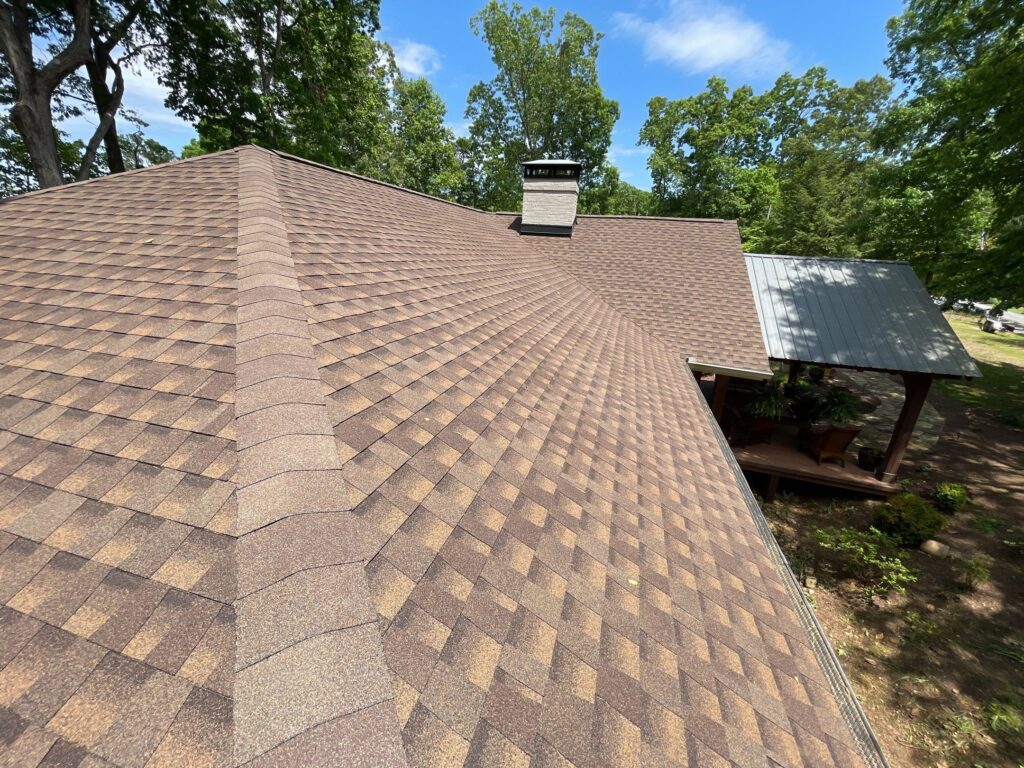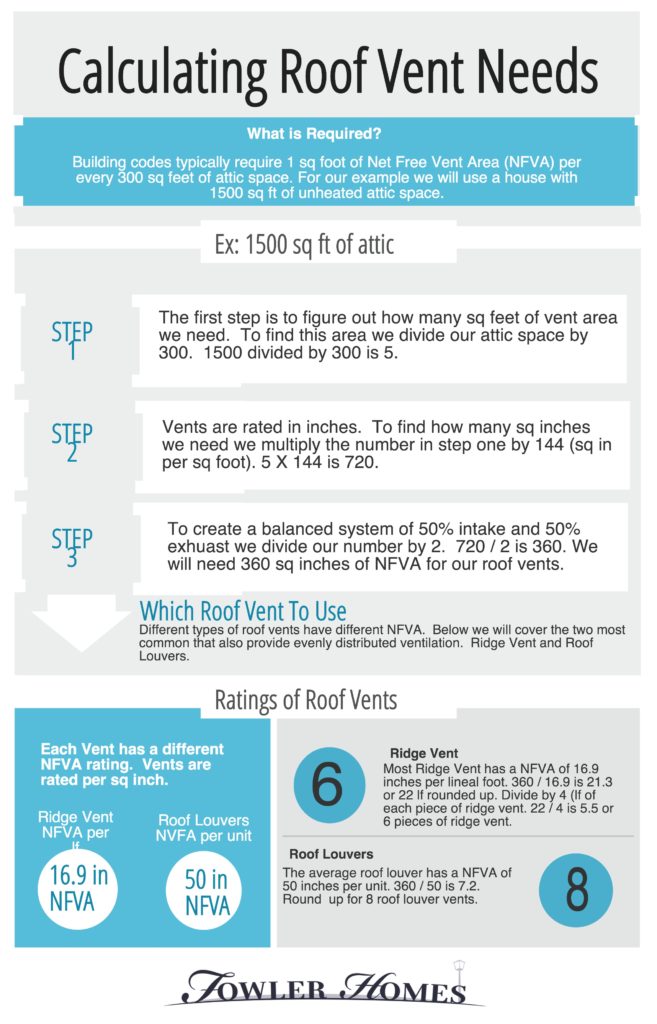Ridge Vent vs. Roof Louvers

One of the most common questions we receive from homeowners when they are thinking about replacing their roof is what kind of vent they should be using. What is the difference between ridge vent vs. roof louvers? This article goes in-depth on how to calculate the amount of venting you need, so, if you are looking for a quick answer, here it is: ridge vent coupled with sufficient soffit venting is by far the best product for a balanced system.
Often Atlanta roofers simply tear off the old roof and reinstall the exact same vents that might have been part of the original problem. To answer the question about which roof vent to use, we first need to understand the purpose of roof vents (hint: it’s not only to lower your AC bill).
If you are looking for a professional roofer in the Atlanta area for roof repairs or replacement, contact us online today.
Purpose of Roof Ventilation Systems
Ventilation systems were developed in the home construction industry for a few different reasons that largely depend on your regional climate. Most shingle manufactures require proper venting for warranties on their product. Roof ventilation serves the following purposes:
- Remove hot air in warm weather (which can shorten the life of your roofing system).
- Help combat ice dams that can form when warm attic air prematurely melts snow on the roof.
- Prevent condensation build-up on the underside of roof decking.
Removing Hot Air
If you have ever spent much time in an attic in the summer months, you know just how hot it can get up there. A proper roof venting system creates an air flow that brings air in at the soffit and exits it through the top of the roof or ridge. This draft of air removes the hot air and brings in cooler air from the outside. Overly hot air can cause many asphalt-based shingles to fail.
Ice Dams
Although ice dams are rare in the South, they can occur, so it’s important that your roof be properly vented to combat this potential problem. Ice dams occur when warm air in the attic causes snow on the roof to melt. When the water from melting snow reaches the lower part of the roof that isn’t as warm, it refreezes and forms ice dams. Proper ventilation keeps your attic space cold in the winter, preventing warm air from melting snow.
Attic Condensation
The primary cause of condensation in attics is warm air escaping from your living space meeting cold air. The water vapor in the warm air condenses when it meets cold air and condenses on surfaces in your attic such as insulation and the underside of the roof decking and rafters. Over time this condensation can render your insulation ineffective and cause serious problems with the roof decking. A good roof ventilation system keeps air moving on the underside of your roof decking and balances air temperatures to prevent condensation.
This is all great stuff to know, but which vent do you use? Codes require 1 sq. ft of Net Free Vent Area for every 300 sq. feet of attic space. This is often referred to as the 1/300 rule. For the best results, you need to split the NFVA at both the soffits and ridge 50/50 according to manufactures.
If your roof is in need of a better ventilation system, contact the roofing experts at Fowler Homes today!
Which Vent Works Best
For a quick answer: ridge vent is vastly superior to other roof vents when it comes to venting your attic space. To understand why, we will use a real attic as an example and compare each vent.
Example—let’s use a home with an attic space of 1500 sq feet:
Calculating NFVA
First we divide the sq feet of the attic by 300, and we are left with 5. This home will require 5 sq. feet of of NFVA. All vents are rated with a vent area in inches, so we multiply 5 by 144 (in per sq. feet), which gives us 720 sq. inches of NFVA. Because we split NFVA between both the soffit and the ridge, we divide that number by 2 to get the area for roof vents. 720 divided by 2 is 360 sq. inches of roof vent. We now take 360 and compare it to each vent.
NFVA of two most common roof vents
Ridge Vent: 16.9 in.
Turtle Vents or Square Box Vents: 50 in. each
In our example of a home with an attic space of 1500 sq. feet, we need 22 linear feet (21.3 rounded up) of ridge vent. Ridge vent comes in pieces 4’ long, so we need 6 pieces. If we use turtle vents, we will need 8 individual vents to equal the same net free vent area of ridge vent. To make it a little easier I created this handy info graphic.

Of course, there are other vent systems such as roof turbines and power vents. I didn’t use either one of these products in the example because the ventilation they provide is not evenly distributed over the entire roof area, so while one area might be sufficiently ventilated, the rest of the attic area is ignored.
I realize this is article involves a bit of math, so if anything is confusing, leave a comment below, and I’ll walk you through the steps. You can also email me at lee@www.fowlerexteriors.com or give me a call at 770-744-5992.
If you live in the Atlanta metro area contact us here and we will come out to go over your venting options.
Don’t forget to check out our other articles on common roof questions below.
Roofing Questions:
3-Tab Shingles Vs Architectural Shingles
Plastic Pipe Boots Vs Lead Pipe Boots